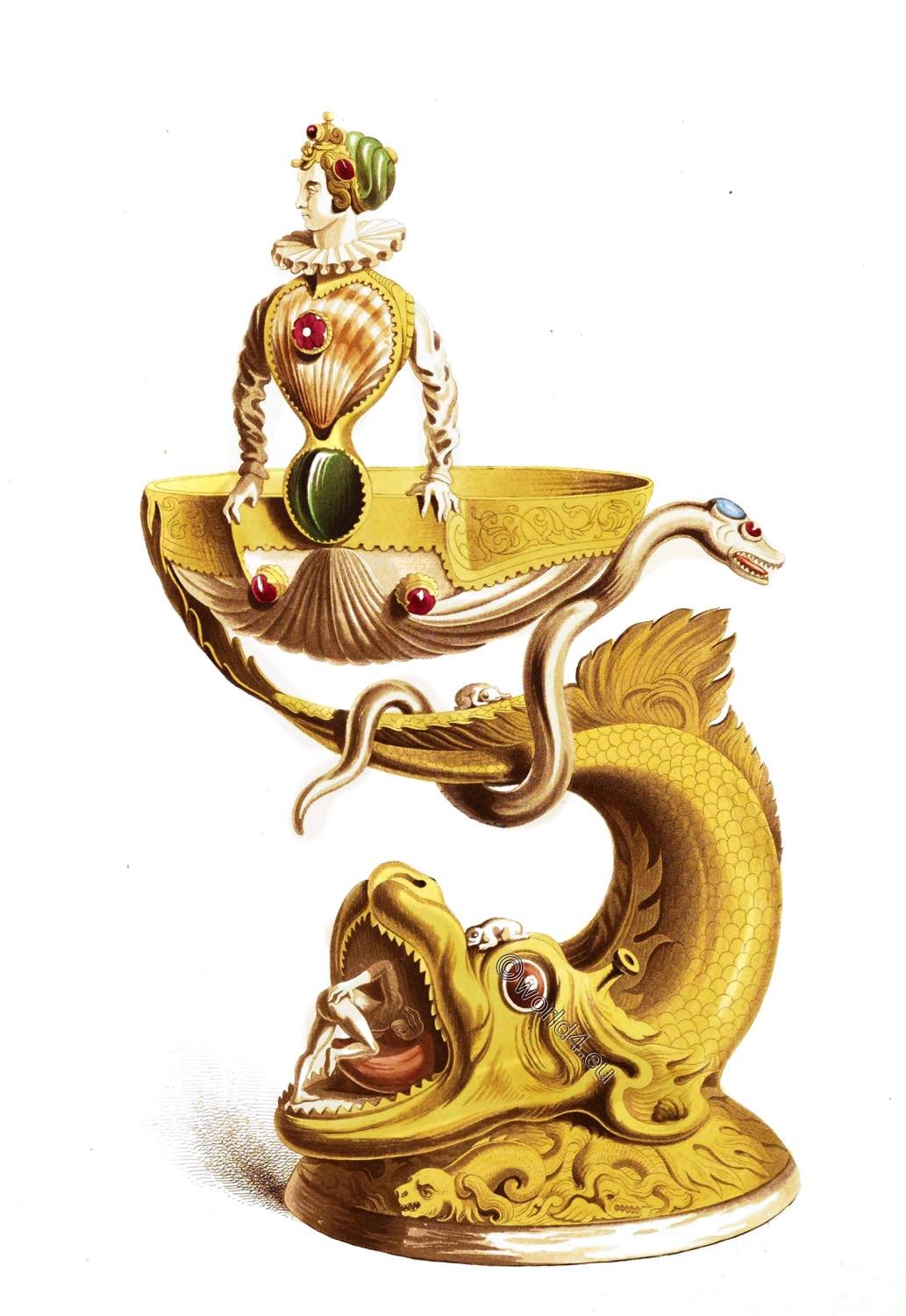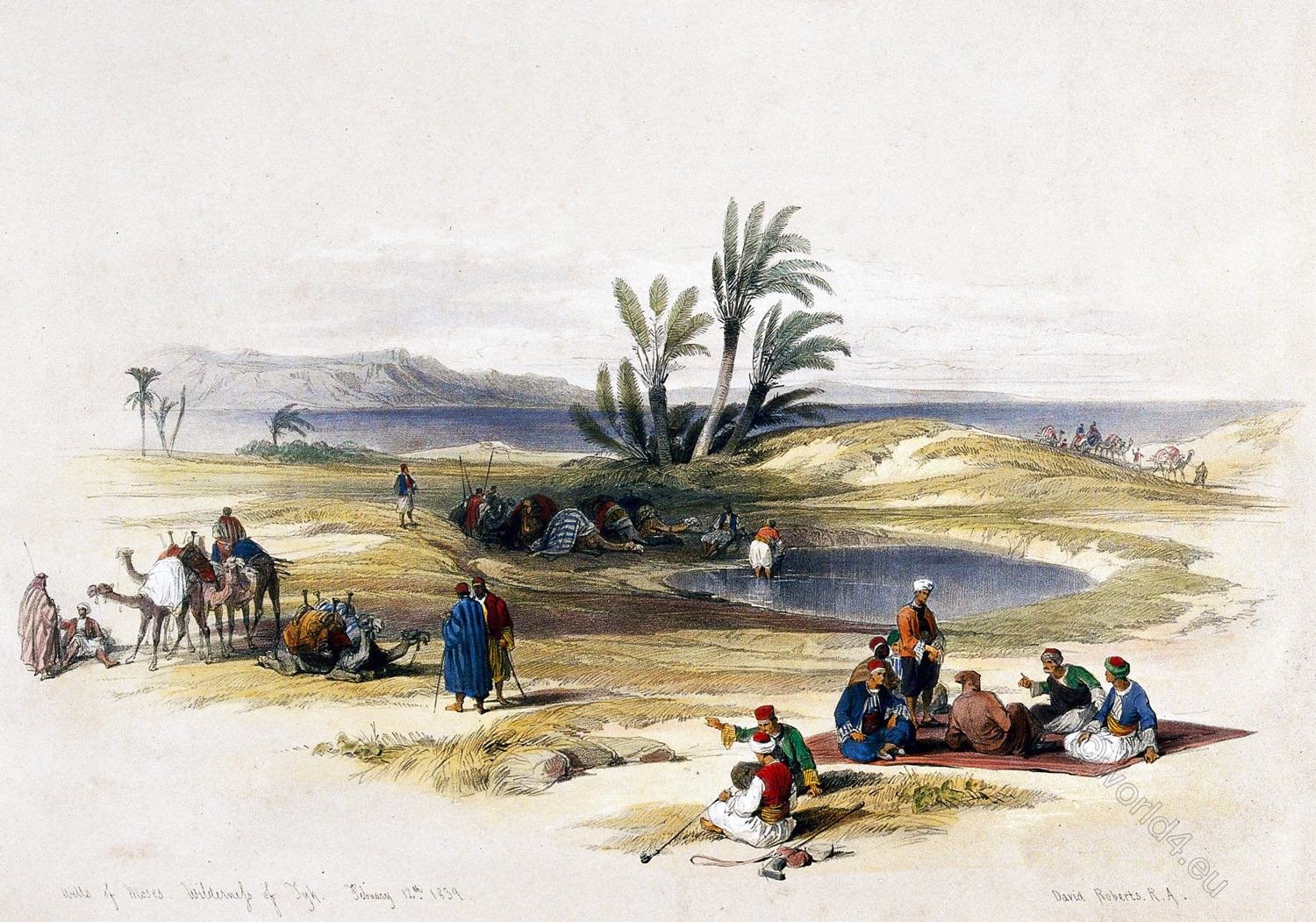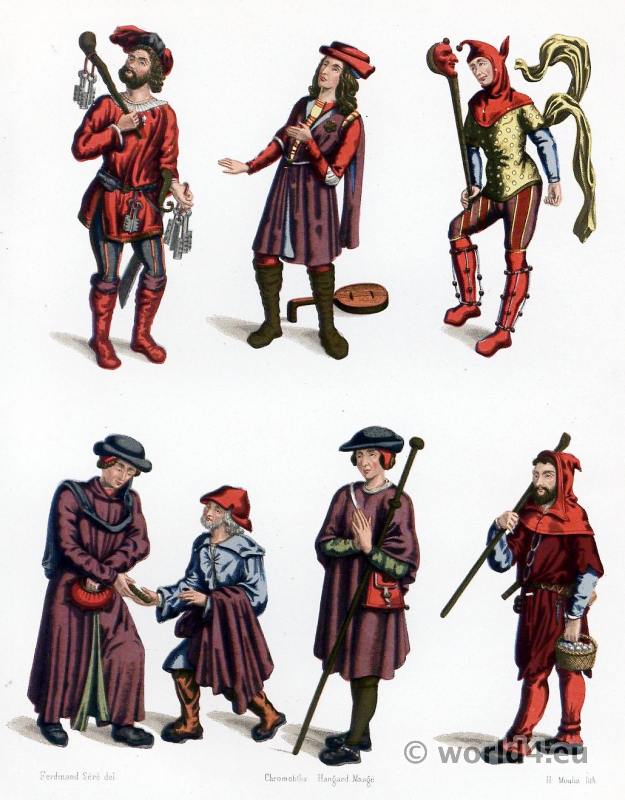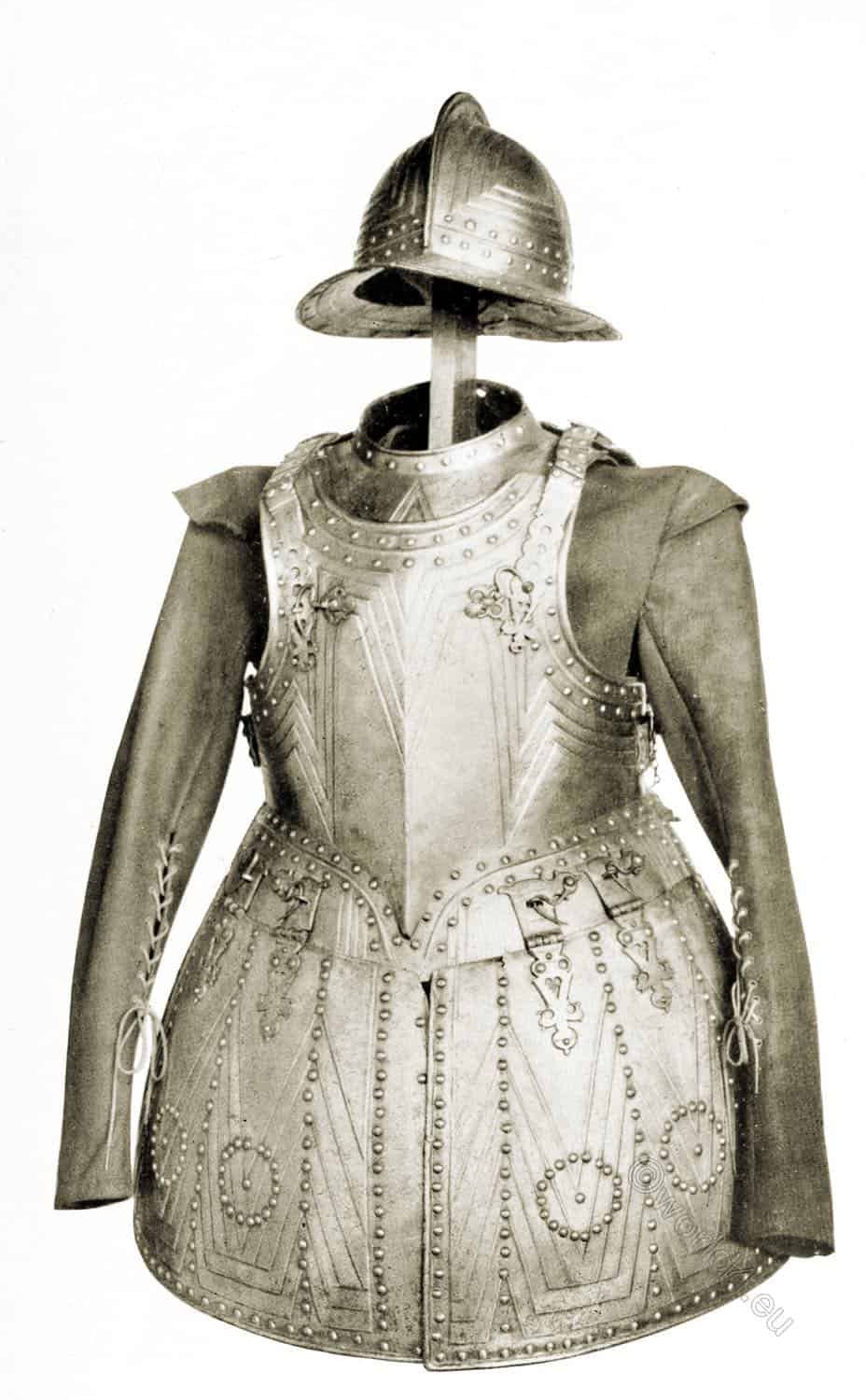Wells Cathedral, officially The Cathedral Church of St Andrew, is an Anglican cathedral in the English town of Wells in Somerset. It is the Episcopal Church of the Diocese of Bath and Wells.
Gothic architecture in England is generally thought to have begun with the east end of Canterbury Cathedral in 1175, but the real English Gothic, the Early English, began with the construction of the new cathedrals at Wells in 1180 and Lincoln in 1192.
Wells is the earliest Gothic church to be completely furnished with pointed arches. Along with Salisbury Cathedral, it is the main work of early English Gothic architecture, but also contains parts from the High and Late Gothic periods. The whole complex is very well preserved and offers altogether “one of the most complete pictures of the whole European Middle Ages”.
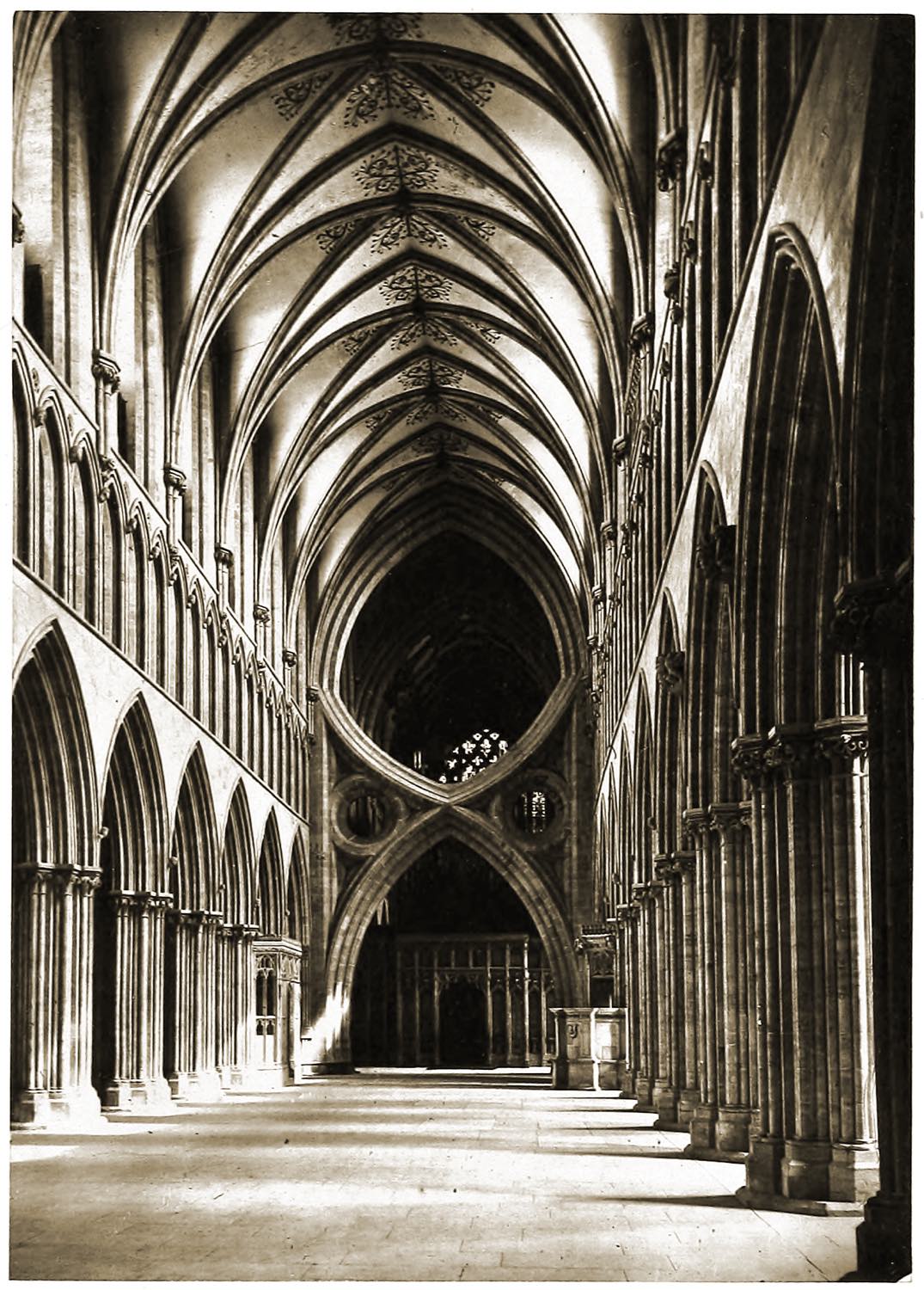
NAVE OF WELLS CATHEDRAL
IN a fertile plain at the foot of the Mendips lies the quiet cathedral city of Wells. It takes its name from two wells in its vicinity-St. Andrew’s Well, which has still almost the honour of a sacred spring, and the not far distant source of the little river-Ax, which flows away through many a flowery meadow into the Bristol Channel. Here the pious Ina, king of the West Saxons, built a church, which he dedicated to the Apostle St. Andrew, who thus became, in a double sense, the patron of the city.
In 905 A. D. Edward the Elder, the son of Alfred, and only less distinguished than he because the son of such a father, and the sire of three successive monarchs – Athelstane, Edmund, and Edred – raised Wells into a bishopric.
The Saxon cathedral then built had fallen into complete decay during the rapacious reigns of the first Norman princes, and in 1135 was repaired by Bishop Robert. But it is from the beginning of the thirteenth century that the present church dates. Then the large and noble hearted Jocelyn of Wells rebuilt almost the whole fabric, and left it much as it now stands, one of the very finest of all our English cathedrals, whether in point of size, purity of style, delicacy of execution, or proportion and effect.
In 1318 the canons of the cathedral voluntarily taxed themselves to the extent of one-fifth part of their incomes in order to raise the vast and massive central tower to its present splendid proportions; but what was the dismay of the generous prebends to find that, in consequence of the enormous pressure put upon the arches which supported it, they were giving way, and that huge rents and fissures threatened the immediate ruin of their beloved cathedral!
No time was to be lost: the wonderful inverted arches which are shown in the photograph were inserted in order to throw the strain in a lateral direction, and thus by means of accident, one may almost say of error, the peculiarly beautiful and unusual effect here portrayed was produced. Strangely enough these marvelous arches form the sign of the cross of St. Andrew, the especial emblem of the cathedral, and to his beneficent influence no doubt their effectiveness, both as to strength and beauty, would be affectionately attributed by the anxious prebends, who saw by their means their cathedral not only saved from destruction, but beautified and adorned.
Perhaps the most wonderful and characteristic trait of Wells is its vast throng of statues, which form, in spite of the malevolent work of ages and ignorance upon them, an epitome of the Scriptures, and a history of the Church in all times, from the creation of Adam to the gift of tongues at Pentecost. Here, indeed, are “sermons in stones.”
No less than three hundred figures embellish the western front alone. Amongst the most remarkable of these are the ninety-two representations of the Resurrection. The distinctions of the age and professions of the characters introduced are marked with the most exquisite taste, and yet the most boundless originality, and excited the admiration, as, indeed, they are almost worthy of the genius, of the immortal Flaxman. The sculptures of Amiens and Orvieto excel them in nothing except the greater finish of the stone, and must yield to them in freshness and appropriateness of design.
From the Shepton Mallett Road, only a short distance from the city, and a magnificent view is obtained of the whole cathedral pile, with the Mendips in the background; and, eight miles to the south-west, the strange conical form of Glastonbury Tor throws its shadow over all that remains of the once famous Abbey of Glastonbury, the site of the first British church, built with wicker from the marshes, and the fruitful mother of the now venerable Cathedral of Wells.
Descriptive Article by Francis Clement Naish. Photographed by Good.
Source: Treasure spots of the world: a selection of the chief beauties and wonders of nature and art by Walter Bentley Woodbury (1834-1885); Francis Clement Naish. London: Ward, Lock, and Tyler, Paternoster Row, 1875.
Continuing
Discover more from World4 Costume Culture History
Subscribe to get the latest posts sent to your email.


